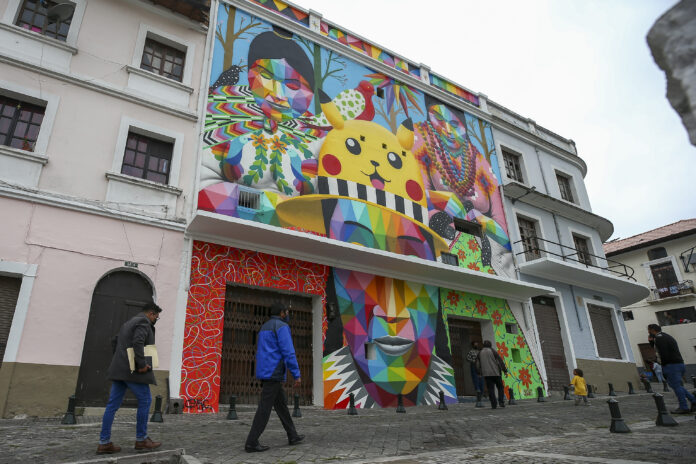The Pikachu present in a mural recently painted by the Spanish artist OkudaSan Miguel in Quito, where he pays homage to the women embroiderers of Llano Grande, a commune in the north of the Ecuadorian capital, has been a source of controversy after its inauguration.
The most famous pokémon of all occupies the central part of Okuda’s work, who took advantage of the hat on the main face of the three women that make up the mural to draw the head of the animated character on it, a surprise that was saved for his last Workday.
The commotion has been so great that even the former president of Ecuador Rafael Correa (2007-2017) proposed on social networks to denounce the artist.
It is not the first time that Okuda has included Pikachu in a mural, as this pokémon is present in several of his pieces made in many countries throughout the world, as well as with other characters from contemporary popular culture such as Mickey Mouse or Ronald McDonald.
This mural made in Quito marks the beginning of CaminArte, an initiative of the municipality of Quito to promote the recovery of the urban heritage of the historic center of the city and with which it intends to create an open-air art gallery, to which the Embassy of Spain contributes five wall paintings.
This project is part of the axis that leads to the Summit of Liberty, where the Battle of Pichincha took place, which sealed the independence of Ecuador and whose bicentennial is commemorated on May 24. This has led many people to mistakenly believe that the Okuda mural alludes to that historical moment, which has generated controversy.
Thus, numerous memes appeared on social networks that take historical paintings of the Battle of Pichincha as if they were used by Commander Antonio José de Sucre to defeat royalist troops.
The Quito Metropolitan Institute of Heritage explained in a statement that Okuda’s mural, “like all the works he does around the world, has a load of color, pop modernism, multicultural content and messages of peace in a globalized world.”
The Spanish artist, known for his works with figures composed of multicolored geometry and patterns from ancient cultures, has also represented in this mural the traditional embroidery made by the women of Llano Grande and also some of their beliefs, such as the visit of a deceased relative in the form of a hummingbird
The entire cost of the work was borne by the Embassy of Spain together with the City Council of Los Llanos de Aridane, on the Canary Island of La Palma, as part of the internationalization of the artists who have pieces in their Contemporary Art Forum ( CEMFAC).
A series of private companies and institutions such as Fundación Telefónica, Universidad San Francisco de Quito and Universidad Central de Ecuador also contributed to this artistic donation to the capital of Ecuador.
Conforms to The Trust Project criteria








